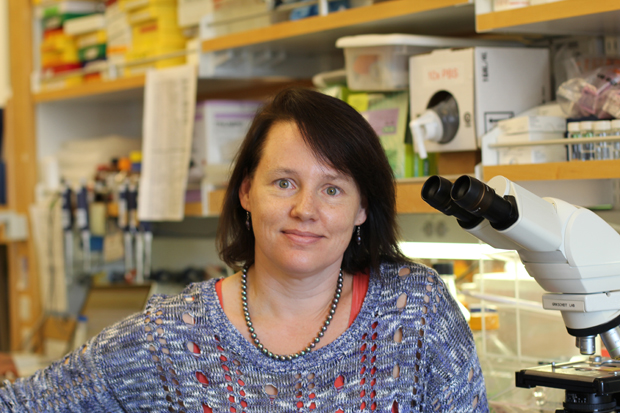A new study by researchers at Children’s Hospital Los Angeles (CHLA) has shown that small intestine grown from human cells replicates key aspects of a functioning human intestine.
The small intestine they developed contains important elements of the mucosal lining and support structures, including the ability to absorb sugars, and even tiny or ultra-structural components like cellular connections.
The research was led by Tracy C. Grikscheit, MD, an assistant professor of surgery at the Keck School of Medicine of USC and a principal investigator for the Saban Research Institute of CHLA and its developmental biology and regenerative medicine program. Grikscheit is also a pediatric surgeon at Children’s Hospital Los Angeles and a principal investigator with USC Stem Cell.
Published online Jan. 8 by the American Journal of Physiology: GI & Liver, the work brings surgeons a step closer to helping human patients via this regenerative medicine technique.
Tissue-engineered small intestine, known as TESI, grows from stem cells contained in the intestine and offers a promising treatment for short bowel syndrome (SBS), a major cause of intestinal failure, particularly in premature babies and newborns with congenital intestinal anomalies. TESI may one day offer a therapeutic alternative to the current standard treatment, which is intestinal transplantation, and could solve its largest challenges — donor shortage and the need for lifelong immunosuppression.
Grikscheit aims to help her most-vulnerable young patients, including premature babies who develop a devastating disease called necrotizing enterocolitis (NEC) in which life-threatening intestinal damage requires removal of large portions of the small intestine. Without enough intestinal length, the babies are dependent on intravenous feeding, which is costly and may cause liver damage.
NEC and other contributors to intestinal failure occur in 24.5 out of 100,000 live births, and the incidence of SBS is increasing. Nearly a third of patients die within five years.
CHLA scientists had previously shown that TESI could be generated from human small intestine donor tissue implanted into immunocompromised mice.
The new study determined that mouse TESI is highly similar to the TESI derived from human cells, and that both contain important building blocks, such as the stem and progenitor cells that will continue to regenerate the intestine as a living tissue replacement. And these cells are found within the engineered tissue in specific locations and in close proximity to other specialized cells that are known to be necessary for a fully functioning organ.
“We have shown that we can grow tissue-engineered small intestine that is more complex than other stem cell or progenitor cell models that are currently used to study intestinal regeneration and disease, and proven it to be fully functional as it develops from human cells,” Grikscheit said.
Additional contributors from Children’s Hospital and Keck Medicine of USC include Christa N. Grant, Garcia Salvador, Frederic Sala, Ryan J. Hill, Daniel E. Levin, Allison L. Speer, Erik R. Barthel, and Hiroyuki Shimada, as well as Nicholas C. Zachos of Johns Hopkins University’s School of Medicine.
— Debra Kain


